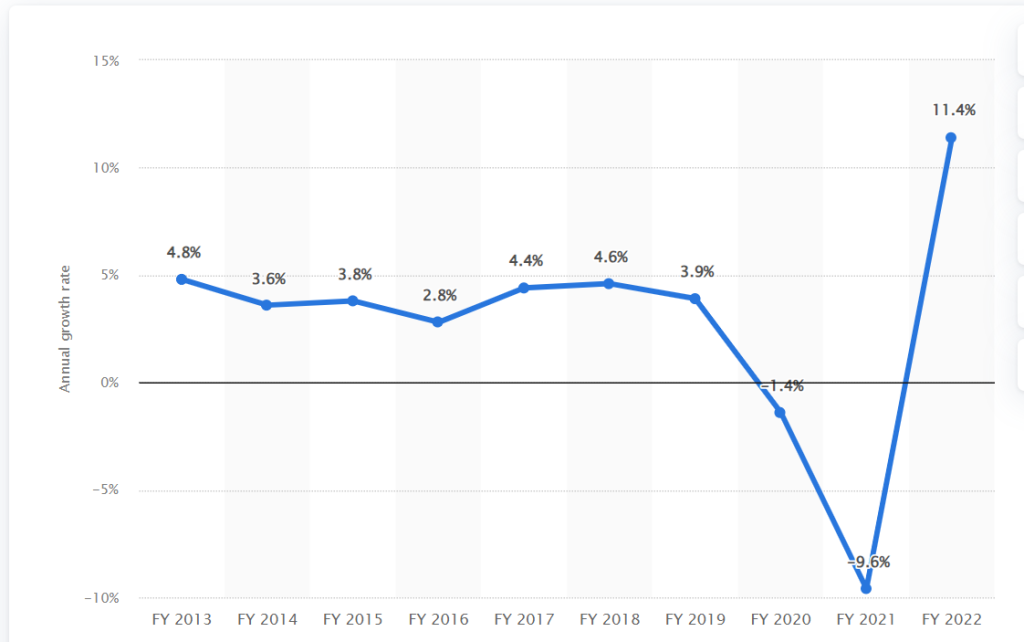Context:
India’s growth outlook has seen a remarkable upswing, primarily propelled by a robust 10.4 percent expansion in its manufacturing sector in October, marking a stark contrast to the discouraging -5.8 percent growth observed a year ago. Despite a challenging global landscape marked by geopolitical tensions, persistent inflation, and volatile demand, India’s manufacturing sector exhibited unexpected resilience, emerging as a pivotal driver of economic growth.
Relevance:
GS-2
Government Policies and Interventions
GS-3
- Industrial Growth
- Industrial Policy
Mains Question:
The manufacturing sector in India needs to prioritise technology-driven approaches to achieve growth and prosperity. Comment. (10 Marks, 150 Words).
India’s Manufacturing Sector:
- The manufacturing industry comprises enterprises involved in the mechanical, physical, or chemical alteration of raw materials, substances, or components to produce finalized goods.
- India’s manufacturing sector is a pivotal driver of the nation’s economic growth, employing approximately 12% of the workforce and contributing around 15% to the country’s GDP. This diverse sector encompasses various businesses, including those in textiles, pharmaceuticals, automotive, and consumer durables.
Annual growth rate of production in the manufacturing industry in India from financial year 2013 to 2022:

Government initiatives:
- Government initiatives, including Production-Linked Incentive (PLI) schemes, robust policy thrust, and fresh investments, have played a role in reinforcing the sector.
- Nevertheless, challenges persist, necessitating further attention to fully unlock the manufacturing sector’s potential.
Persisting Challenges:
- Micro, small, and medium enterprises (MSMEs) constitute 36 percent of India’s manufacturing output but face challenges like limited market reach, financial constraints, and technological gaps.
- Despite the era of liberalization, privatization, and globalization, India has yet to fully capitalize on the manufacturing industry’s benefits.
- While India’s goods exports have shown significant growth, reaching $453 billion in 2022 from $9.1 billion in 1985, the gap with China’s exponential growth in goods exports highlights the need for strategic improvements.
- India’s failure to achieve desired levels of skilling and its inadequate infrastructure, utilizing only 3 percent of GDP for construction compared to China’s 20 percent, hinder its manufacturing efficiency.
Way Forward:
- To attain growth and prosperity, India’s manufacturing sector must prioritize technology-driven approaches, embracing digitization, automation, sustainable practices, and innovation.
- Automation, crucial for success, remains underutilized and requires urgent attention. A holistic approach considering product, process, and sustainability is imperative.
- Streamlining logistics and improving energy efficiency are crucial for MSME growth, necessitating priority financing and guidance.
- China’s success in merchandise exports stems from an export-oriented strategy, focusing on industries with high export potential, economies of scale, and investments in trade-related infrastructure.
- The startup boom presents an opportunity to attract investments and scale up manufacturing. A collaborative model incentivizing the industry and supporting stakeholders is crucial.
- Infrastructure investment, fostering innovation, and simplifying regulations are essential for India to become a manufacturing powerhouse. The government’s support in funding research and development is vital.
- Stakeholders across industries must work collaboratively, focusing on competency, competitiveness, and encouraging young entrepreneurs.
Conclusion:
The manufacturing industry, a vital component of the country’s economic activity, has shown signs of growth after several quarters of subdued performance. To boost employment and increase the sector’s contribution to GDP from the current 17 percent to 25 percent, concerted efforts are required. The government’s measures, combined with successful business strategies, especially a Grow Global, Grow Local approach, can position India as the world’s third-largest economy by 2024, targeting $5 trillion by 2025.





